Discover how long baby birds stay in the nest, how long it takes bird eggs to hatch, how baby birds learn to fly and more about bird nests.
Bird Egg Cycle Phase #1: Laying
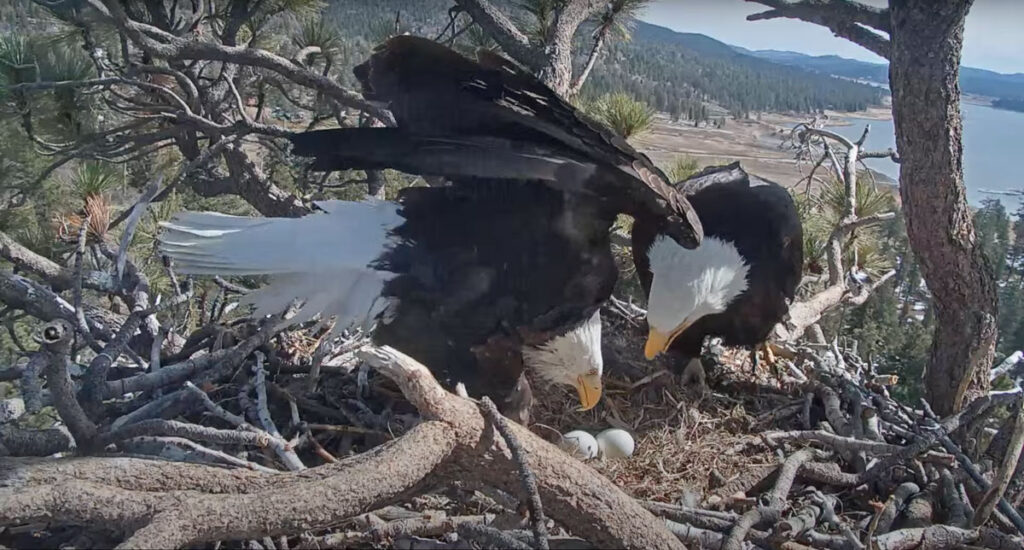
The majority of bird species lay an egg within a day or two of fertilization. Nevertheless, some bird species may require more time than that to lay eggs following copulation. For example, it could take five to ten days for Bald Eagles, like our own Jackie and Shadow. After mating, lovebirds can lay their eggs five to twelve days later. Furthermore, some species’ egg-laying periods can be weeks or even months.
Usually, birds will lay multiple eggs; these eggs are referred to as a clutch when they are laid during a single nesting season. Bird species differ in their clutch sizes, as do individuals within the same species. A clutch can occasionally consist of just two or three eggs, or it can contain up to 20 eggs or more (like those of the Gray Partridge). Certain birds, such as thrushes, robins, and bluebirds, nest twice, three, four, or even more times a year, while other birds only nest and lay eggs once.
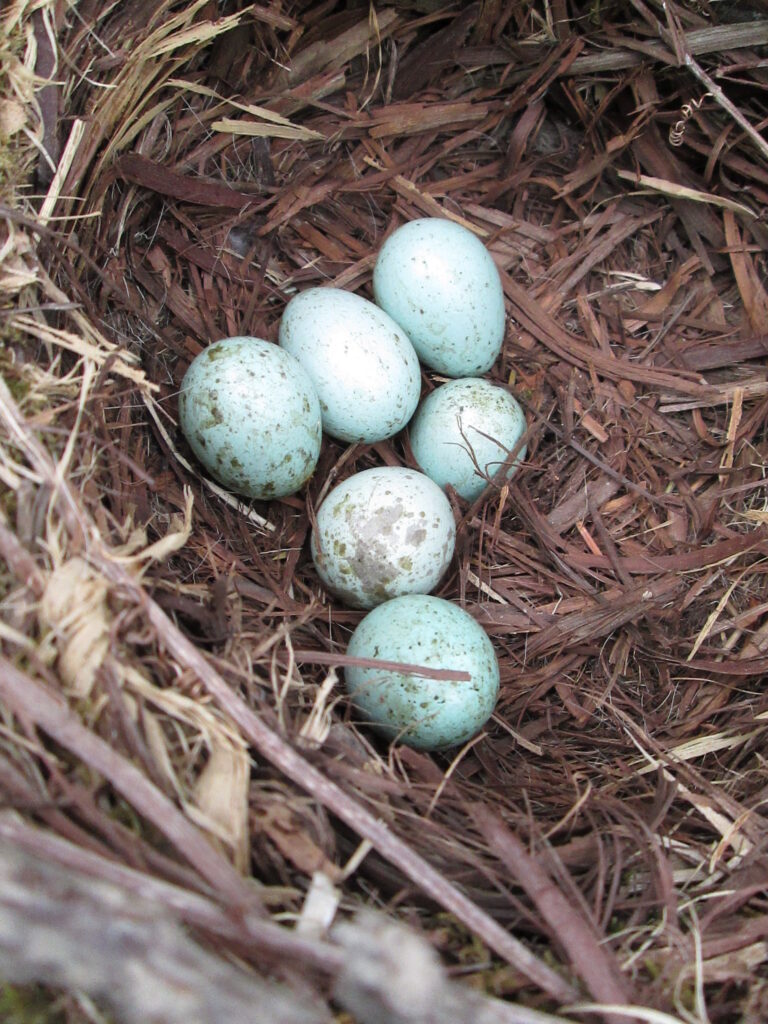
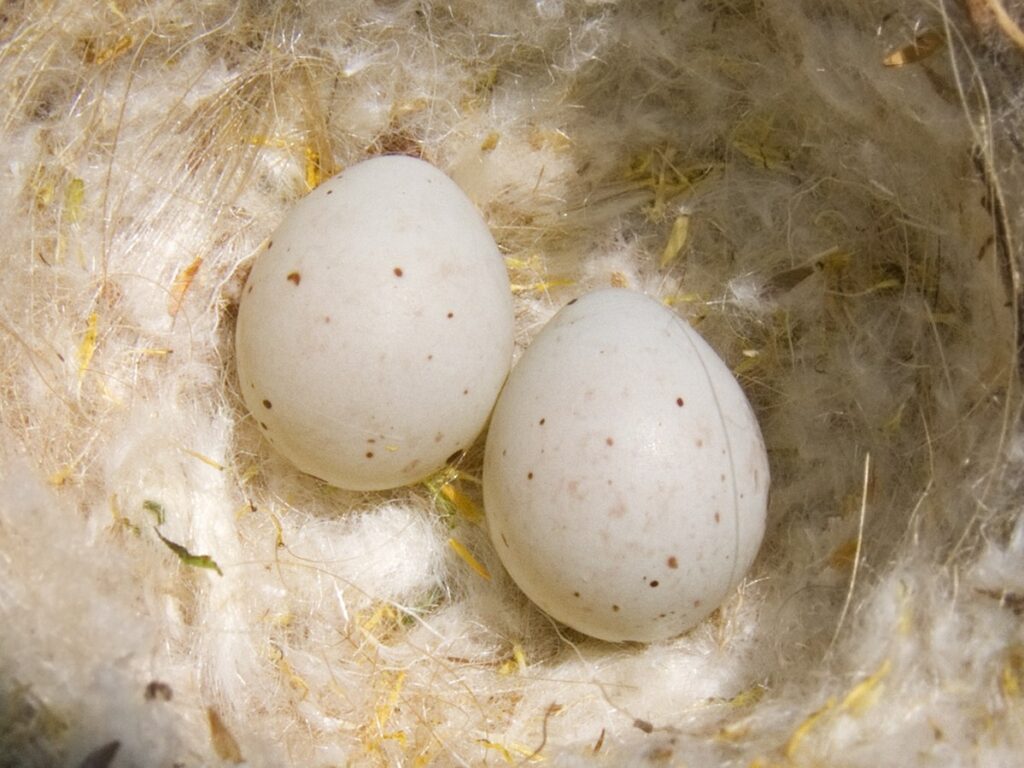

Left to right: crow eggs, goldfinch eggs, and robin eggs.
Like the features of various bird species, there can be wide variations in the color, shape, and size of their eggs. Heres a list of bird species and their egg characteristics:
| Bird species | Egg size | Egg color | Egg markings |
| Bald Eagle | L: 2.3-3.3 in. W: 1.9-2.5 in. | Dull white/tan | Light brown blotches |
| Blue Jay | L: 1.0-1.3 in. W: 0.7-0.9 in. | Blue/pink | Brown spots |
| Blue Tit | L: 0.6 in. W: 0.5 in. | Cream | Brown spots |
| Crow | L: 1.4-1.9 in. W: 1.0-1.2 in. | Bluish/olive green | Brown and gray blotches |
| Goldfinch | L: 0.6-0.7 in. W: 0.5 in. | White/cream | Reddish-brown spots |
| House Finch | L: 0.6-0.8 in. W: 0.5-0.6 in. | Blue/white | Black or lavender spots |
| House Sparrow | L: 0.8-0.9 in. W: 0.6 in. | White | Black or gray spots |
| Jackdaw | L: 1.4 in. W: 1.0 in. | White/pale blue | Gray or brown spots |
| Mourning Dove | L: 1.0-1.2 in. W: 0.8-0.9 in. | White | Smooth |
| Robin | L: 1.1-1.2 in. W: 0.8 in. | Blue | Light brown spots |
Bird Egg Cycle Phase #2: Incubating
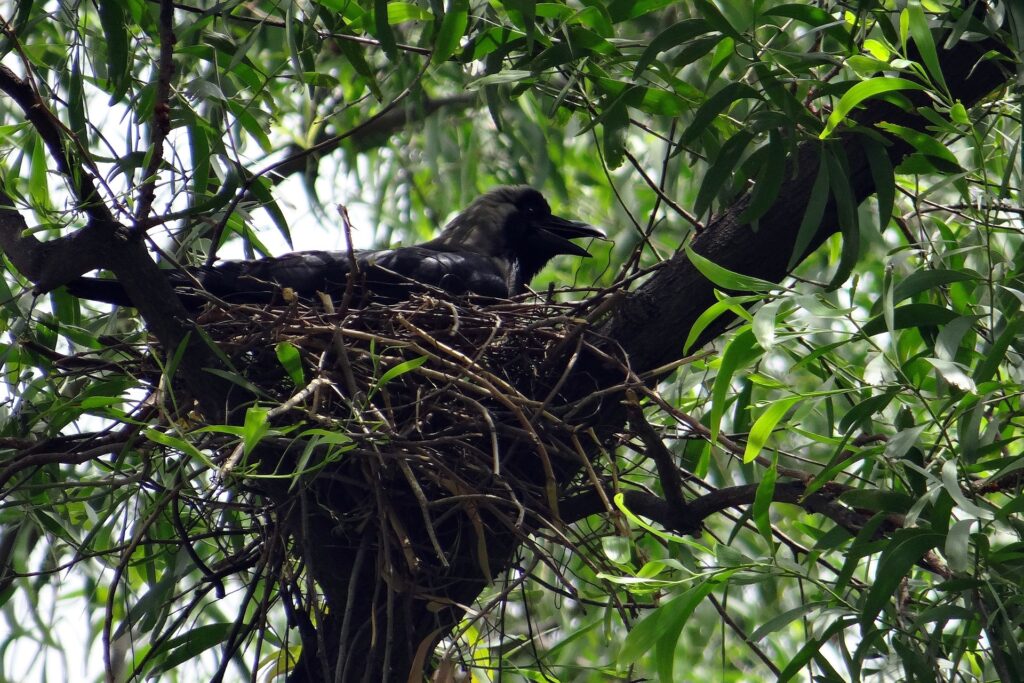
For a certain amount of time, birds must keep their eggs warm in order to promote the healthy development of the hatchling. They achieve this by sitting on their eggs and using the heat from their bodies to maintain a comfortable temperature (between 85 and 104° F). The length of this time, known as the incubation period, differs among species. Generally speaking, though, the longer the incubation period, the larger the bird. For example, the incubation period for a songbird is 1215 days, but it’s double that or longer for most duck species. For approximately 18 days, robins incubate their eggs for 13 days, and bald eagles for about 40 days. The Megapode, which is primarily found in the Western Pacific Islands, has the longest incubation period on record at ninety days, while the Laysan Albatross has one of the longest at sixty-six days!
Certain bird species begin incubating as soon as the clutch’s first egg is laid, while others hold off until the second or third egg And before starting the incubation process, songbirds wait until they have laid all of their eggs. The incubation process will involve one or both of the bird parents. It’s typical for parents to take “shifts” when caring for their children. For instance, the mother will typically take over during the day after the father of a Northern Flicker completes the night shift. Similar shared incubation behaviors are shared by woodpeckers, starlings, pigeons, and doves, but in other species (such as hummingbirds and some raptors), the mother serves as the only incubator. However, in more recent instances, the father frequently assists by providing food for the mother and guarding the nest from intruders.
Facts About Bird Nests
Although nests are typically thought of as a bird’s home, it would be more accurate to think of them as a nursery where young birds are raised. Sarah Winnicki-Smith, a Ph. D. candidate at the University of Illinois Urbana-Champaign studying avian evolutionary ecology, helps dispel additional myths regarding nesting According to Sarah, “adult birds don’t always hang out at the nest like we might see on television shows.” Learn how birds construct their nests, when their eggs hatch, how long the young birds stay in the nest, and what the young birds eat.
Discover the nine distinct kinds of bird nests and how to identify them.
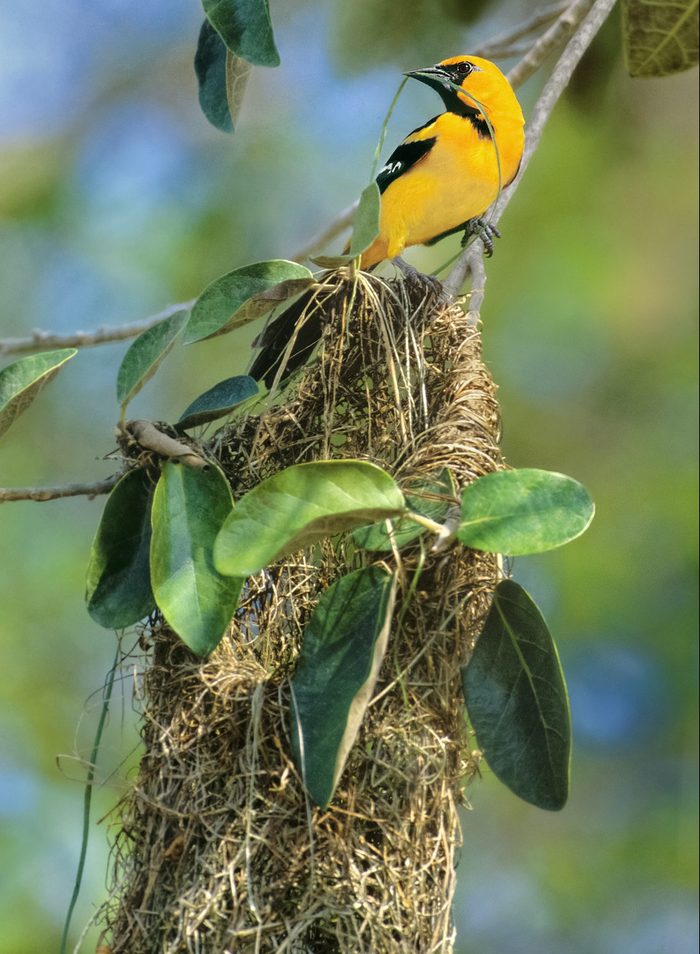
FAQ
How long does it take for baby birds to fly?
How long after a bird makes a nest does she lay eggs?
How long do baby birds stay with their mother?
Can bird eggs hatch without mother?